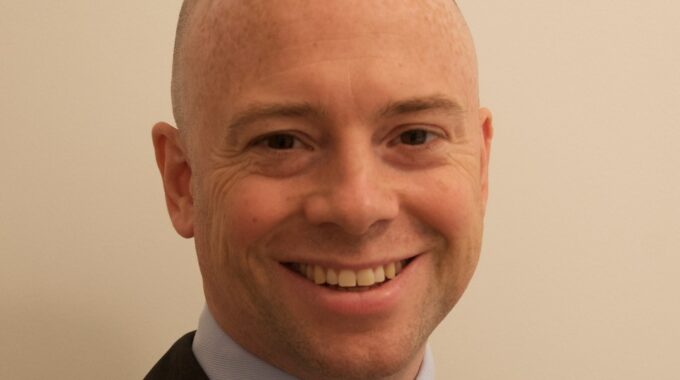“I knew I loved paediatric ophthalmology but wanted to combine this with retinal surgery so that I could be a part of the new gene therapy revolution.”
Ophthalmologist, Robert Henderson, tells of how his medical career path led him to working on pioneering eye treatments for Battens disease.
‘How did you get into ophthalmology?’ is a question that I often get; like many histories, there’s the story we tell, and behind it a more prosaic truth.
Finding ophthalmology
At the end of medical school I went on an elective to a mission hospital outside Nairobi to work on the wards there. The contact who had organised the placement was a notable ophthalmologist running the referral centre for east Africa. To be polite, I thought I should go and see what he did: it was extraordinary. He would pack an operating theatre into the back of a small plane which he flew into the bush. Over a few days he and colleagues would do numerous cataract surgeries and transform the lives of the local villagers; I was hooked.
It was a perfect fit for me: a fascinating blend of medicine and wonderfully elegant surgery. It may not be a high-octane surgical specialty, but the impact on people’s lives in saving and preserving vision is endlessly fascinating and rewarding.
The ‘sausage factory’
The journey to becoming a consultant in any speciality is commonly a tale from the sausage factory. At the end of training with yearly moves around the country, multiple postgraduate exams, endless appraisals, workplace based assessments, annual reviews of competencies and a host of other educational hurdles, one is spat out the other end with an entry on to the specialist register and hunting for a consultant job. But, to torture the sausage analogy, while the sausage casings are the same, the additional ingredients are what transform the barbeque banger into a something a bit more artisan.
My first proper ophthalmology job came in 2001 when I was posted to Great Ormond Street as a Senior House Officer. It was there I met some of the doyennes of paediatric ophthalmology – the great names who wrote many of the textbooks that we still use. I learnt how to engage and examine children whilst talking to parents simultaneously; how to think critically, and it was those mentors who propelled my love of paediatrics.
Moving into genetics
I knew I wanted to take some time out to pursue academic interests and, in 2004 faced with a choice of surveying glaucoma in Mongolia or examining the genetics of paediatric retinal disease I decided to stay closer to home. I entered the world of modern genomics and, moving from the operating theatre to the laboratory, I learnt how to wield a pipette and perform genetic sequencing. It was during this time I became involved with one of the world’s first ocular gene therapy trials taking place at Moorfields. The concept of using a virus to carry a healthy copy of a gene into a target cell to transform function carried an extraordinary potential to change the disease prognosis for many of my patients and set the stage for my future interest in novel therapeutics.
At the end of training, one usually subspecialises in a small field. I knew I loved paediatric ophthalmology but wanted to combine this with retinal surgery so that I could be a part of the new gene therapy revolution. I travelled with my family for a years’ fellowship at the Hospital for Sick Children, Toronto followed by a further year at the Royal Victorian Eye & Ear Hospital in Melbourne, before finally coming back to Moorfields for my final year of training. In 2014 I was appointed as a consultant joint between Moorfields and Great Ormond Street and took over the clinics from my mentor, whilst starting a new retinal surgery unit at GOSH. In 2020 I introduced the world’s first approved ocular gene therapy treatment to Moorfields and GOSH and achieved my first ‘life ambition.’
Working with Battens
It was during this time that I first met Rahul who was the father of a child with Battens. Rahul is passionate, like so many of the Battens families, about wanting to preserve vision for his child. Truthfully, I hadn’t known a great deal about the disease at that point; I hadn’t met Paul Gissen and I didn’t know much about ERT. Rahul patiently explained what the issues were, drove me to contact Paul, and pushed us at each meeting to keep thinking about how we could start a study of intravitreal cerliponase.
I am grateful to him and to the BDFA for all of their work in getting us to the point where we can finally try to preserve vision for these children and look forward to hopefully sharing results of this promising treatment in the year or two to come.

